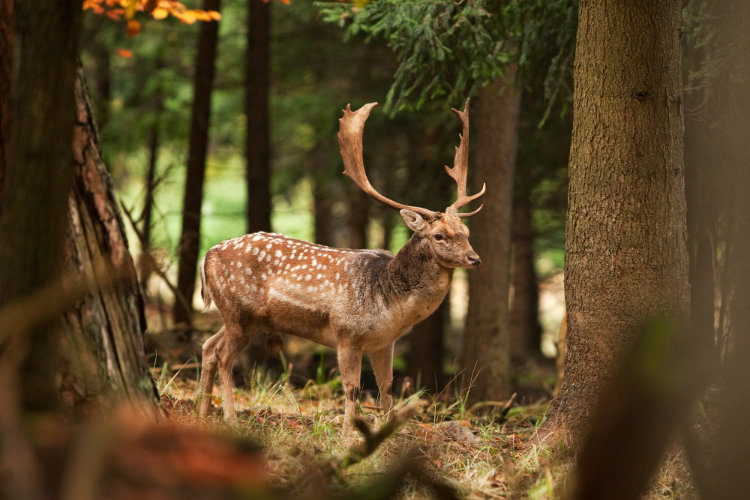
Fallow deer - Forst Eibenstein
The fallow deer is a fascinating species of deer native to various parts of Europe, Asia and North Africa. With its graceful appearance and imposing antlers, the fallow deer is an impressive animal and a popular target for nature watchers and hunters.
The fallow deer is a medium-sized deer, with males being slightly larger than females. They have a shoulder height of about 1.10 to 1.20 meters and a weight of about 60 to 120 kilograms. The most striking feature of the fallow deer is its antlers, which in males have an impressive branching pattern. The antlers are shed each year in the spring and then regrow.
The coat color of the fallow deer varies depending on the season and sex. In summer the coat is reddish brown with white patches, while in winter it changes to a grayish brown. Females usually have a more inconspicuous coat pattern than males. Both sexes have a conspicuous white reflection on the buttocks, which has earned them the name “fallow deer”.
Fallow deer inhabit a variety of habitats, including forests, parklands, and forest edges. They are adaptable and can cope in different climatic conditions. In some regions, they have also been introduced to other parts of the world, where they have become successfully established.
The diet of the fallow deer consists mainly of plant material such as grass, leaves, buds, twigs and bark. They are ruminants and spend much of their time foraging for food. In the summer months they feed on grass and herbs, while in winter they rely on tree bark and buds.
The fallow deer lives in social groups called herds. The packs consist of a dominant male, called “deer”, several females and their young. Males fight for dominance and the right to mate with females during the mating season. Breeding occurs in the fall, and after a gestation period of about eight months, one or two calves are born.
Fallow deer play an important role in the ecological diversity of their habitats. As herbivores, they contribute to seed dispersal and influence vegetation structure in their habitats. They are also an important food source for predators such as wolves and cougars.
The fallow deer is of great importance in both hunting and conservation. In some regions they are hunted for meat, while in other areas their populations are protected
become to maintain their role in the ecosystem. Sustainable hunting practices and habitat protection are critical to ensuring that fallow deer remain an important species and continue to delight people with their beauty and elegance.
